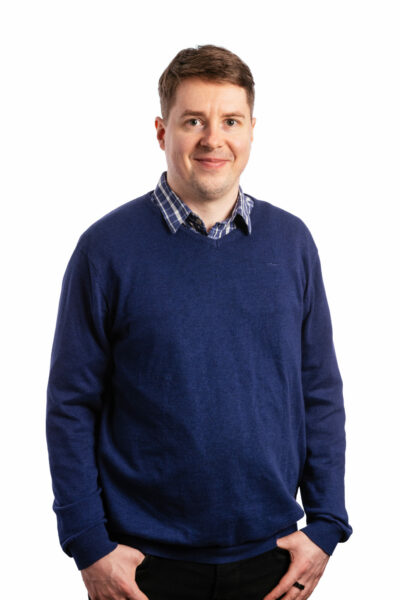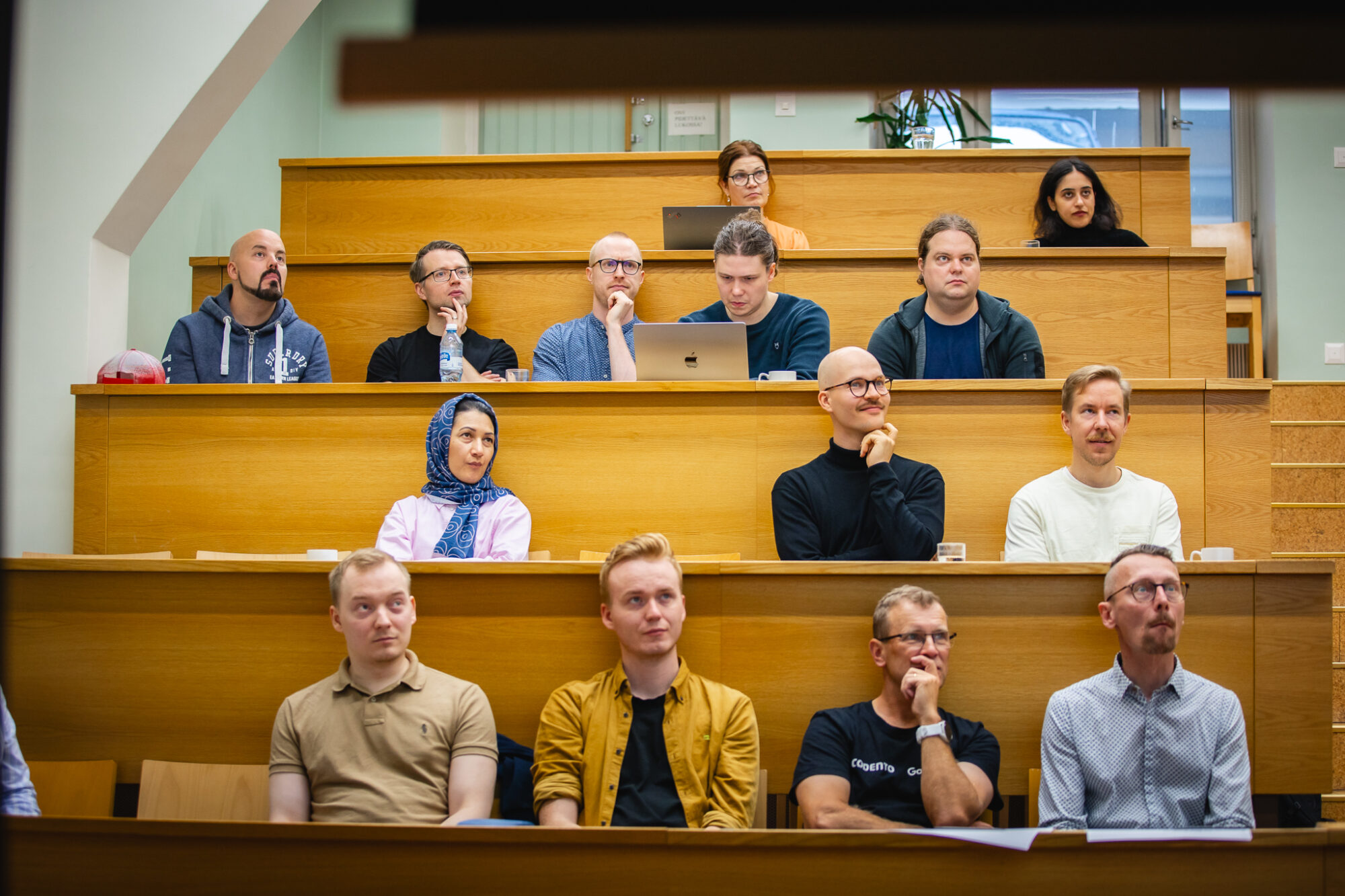Top 4 Picks by Codento Team – fooConf, Helsinki
Authors: Codento consultants Samuel Mäkelä, Iiro Niemi, Olli Alm & Timo Koola
On Tuesday November 7th the second installment of fooConf was held at Hakaniemi, Helsinki. We (eight of us!) spent the day in the conference and asked our team what their one pick of the day was.
Here are our top 4 of the fooConf Helsinki 2023!

#1 Adam Tornhill: The business impact of code quality (top pick by Samuel)
To me, Adam Tornhill’s conference talk was quite mind-blowing. His ”10 years of trauma & research in technical debt” not only translated complex research data into clear visualizations about technical debt and code complexity, but also underscored the significant business impact of tackling these challenges. Through his presentation, Tornhill illuminated how addressing technical debt can lead to improved code quality, reduced maintenance costs and ultimately contribute to the overall success of a software project. It was a fascinating blend of in-depth research and practical insights, leaving a lasting impression on how we perceive and approach software development from both technical and business perspectives.
- Book: The code as a crime scene (2nd. ed, 2023)
- White paper: https://codescene.com/hubfs/web_docs/Business-impact-of-low-code-quality.pdf
- Research publication: https://arxiv.org/abs/2203.04374
- Forbes: https://www.forbes.com/sites/forbestechcouncil/2023/09/07/the-code-quality-advantage-how-empirical-data-shatters-the-speed-vs-quality-myth/

#2 Mete Atamel: WebAssembly beyond the browser (by Iiro)
Mete Atamel from Google discussed the evolving use of WebAssembly technology outside the browser environment. He emphasized that WebAssembly on the server, particularly with the WebAssembly System Interface (WASI), offers a compelling alternative to traditional methods of running applications, such as through virtual machines or containers. This perspective aligns with findings from the CNCF 2022 Annual Survey, which indicates a growing consensus that “Containers are the new normal and Wasm as the future”. Leveraging Wasm with WASI offers several notable benefits over containers, such as faster execution, reduced footprint, enhanced security and portability. However, despite this enthusiasm, it’s important to recognize that we are still some distance from having fully-featured and stable WebAssembly projects for server-side applications. This gap highlights the ongoing development and the need for further innovation in the field.

#3 Guillaume LaForge: Generative AI in practice: Concrete LLM use cases in Java, with the PaL
M API (by Olli)
Guillaume presented hands-on examples on how to utilize large language models via Google PaLM API. PaLM (Pathways Language Model) is a single, generalized language model that can be adjusted to specific domains or sizes (PaLM2). In his presentation, Guillaume utilized Google PaLM APIs and Langchain for building a bedtime story generator in Groovy.
Links below:
- Bed time stories for kids: https://bed-time-stories.web.app/
- Pathway language model: https://blog.research.google/2022/04/pathways-language-model-palm-scaling-to.html
- Palm2:https://blog.google/technology/ai/google-palm-2-ai-large-language-model/
- Langchain4J https://github.com/langchain4j/langchain4j
- Langchain home https://python.langchain.com/docs/get_started/introduction
- Palm APIs https://developers.generativeai.google/products/palm
#4 Marit van Dijk: Reading Code (by Timo)
Presentation by Marit van Dijk (link to slides) starts with a simple observation: “We spend a lot of time learning to write code, while spending little to no time learning to read code. Meanwhile, we often spend more time reading code than actually writing it. Shouldn’t we be spending at least the same amount of time and effort improving this skill?“.
These questions take us into fascinating topics ranging from how to help our brain understand other programmers and our shared code (see book Programmer’s Brain by Felienne Hermans) to structured practices that build up our code reading capabilities. The practice called “Code Reading Club” is one way to practice code reading systematically in small groups. This presentation made me want to try this with team Codento. Stay tuned, we will tell you how it went!
Contact us for more information about Software Intelligence services:

